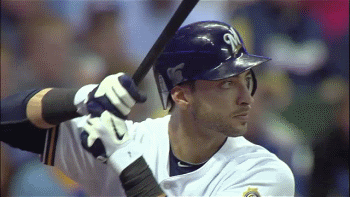Recently traded prospect Austin Jackson now has the unenviable task of replacing a 30 home run hitting star center fielder in Curtis Granderson. Is he ready to embark on that task, or does he need more polish in the minor leagues?
No real good angles of Jackson hitting exist on YouTube -- or I seemed to miss them all. But the video on the right shows some very revealing traits about Jackson's swing.
Lower Body
Jackson gets his front foot down very early, and tries to kick start his swing by pushing his hips, two very inefficient movements when combined. The main reasoning behind getting the front foot down early and "reacting" -- as Jackson does it -- is to limit forward movement and let the ball travel deep into the strike zone. Unfortunately for Jackson, this approach results in a two-part swing with poor intent to swing hard, poor upper body resistance, and him getting caught in between on off-speed pitches.
He neutralizes the benefits of getting his front foot down early by shifting too much weight to the foot. This robs him of precious energy and time. Not only does he not have enough force to exert as he should, but his weight is displaced, which doesn't allow him enough of a rear hip load to stay back.
An Area of Concern
When I first watched Jackson swing, I felt there was a large hole down and away -- especially on off-speed pitches. The video on the right supports this thought (0:45 second mark). Of course, Clay Bucholz's changeup is no slouch, as it has the potential to be an above-average pitch. But that swing shows a lot about where his weight is located, and what his angles of energy are.
Upper Body
Jackson loads his upper body by counter rotating his front shoulder down and in. By the nature of physics -- every action has an equal and opposite reaction -- this causes his front shoulder to fly out when he swings, which doesn't allow his hands stay back and handle off-speed pitches down and away. His front shoulder flying open also disrupts his angles of energy -- pulls him away from the ball -- instead of directing that energy directly into the ball.

Compare Jackson's load to Ryan Braun's. Braun lets his load pull his front shoulder down and in, opposite of Jackson's loading pattern. Braun's load is far more efficient. He maintains proper angles of energy and allows his hands be able to work. From Braun's launch position and angles, he can handle (almost) any pitch, in any location. From Jackson's launch position and angles, he has to become somewhat of a "guess" hitter, and/or hope for a lot of mistakes up in the zone. (Note: This is not to say Braun's loading pattern is what Jackson should copy. It's just a means to show a far more efficient loading pattern, and what actions should happen when.)
Closing Thoughts
Austin Jackson's swing is a work in progress. It has several mismatched parts, most of them moving at the wrong time. Two-move swings rarely succeed at the Major League level. Smoothing his actions into a seamless one-move swing could allow Jackson to let his raw talent shine. He could stand to have more time at Triple-A to learn more about his swing and what adjustments he needs to make. Without smoother actions and an intent to cause damage when he swings, Jackson could struggle mightily at the Major League level.
Follow Steve Carter on Twitter or email him at stevecarterpp@hotmail.com
